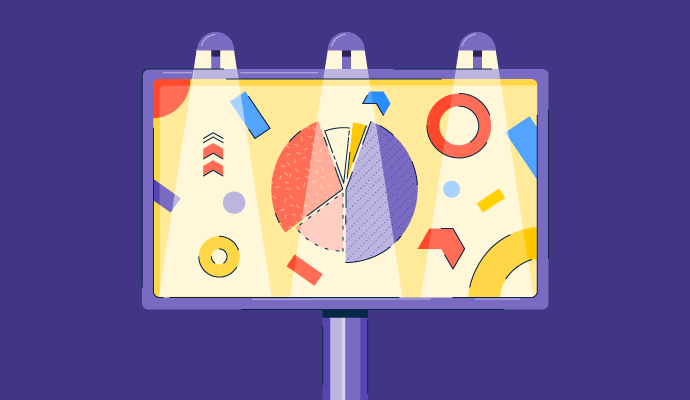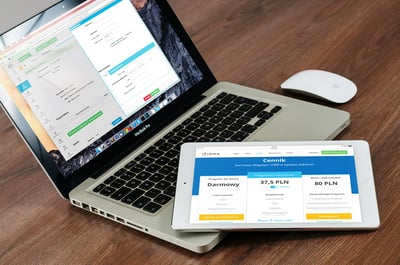October 29, 2025
 by Sagar Joshi / October 29, 2025
by Sagar Joshi / October 29, 2025

Advertisers are no strangers to AI.
They have been using it for a long time; for example, in programmatic advertising, AI has helped with real-time bidding for available ad spaces.
As generative AI chatbots and other software emerged, they made things more interesting and complex. These days, advertisers leverage AI for diverse use cases, ranging from creating ad creatives to streamlining their day-to-day routine. Although some have given sizable gains, some feel that AI’s output isn’t very reliable.
Positive or negative, AI’s impact on the advertising world is clearly apparent. This article visualizes this through a statistical lens, providing a clear overview of AI in advertising.
Below is a brief overview of the state of AI in advertising.
60% of U.S. ad agencies use generative AI, and 31% are exploring it. Programmatic advertising, largely driven by AI and machine learning, is expected to account for 90% of worldwide display ad budgets by 2026. This highlights advertisers’ growing appetite for AI-led media buying.
Undoubtedly, AI is transforming how advertisers operate. Here’s how:
| Using AI for | Percentage of advertisers |
| Creating media strategies | 46% |
| Bidding optimization and mid-flight plan optimization | 46% |
| Creative generation | 54% |
| Audience targeting and segmentation | 51% |
| Customer support or conversational AI | 50% |
| Predictive analytics and trend forecasting | 49% |
| AI risk mitigation | 30% |
| Media buying and optimization | 30% |
Advertisers are no longer using AI as a campaign add-on. They’re integrating it across the entire media lifecycle, from planning and creative to optimization and compliance. This brings us to our next question: Does AI in advertising drive any measurable impact yet?
The answer is a definite yes!
Advertisers who integrate AI into their creative and campaign strategies are enjoying quicker results, more effective campaigns, and a stronger connection with their audiences.
Based on the stats from Microsoft Advertising, the ROI from different campaigns is as follows:
PMax campaigns are goal-based Google Ads campaigns that use machine learning to find converting customers across all of Google's inventory, including Search, YouTube, Display, Discover, Gmail, and Maps, from a single campaign.
Nielsen shares some key findings related to ROI from AI in advertising. The report suggests:
AI-driven campaigns outperform human-managed ones because they merge creative intelligence (AI-generated assets) with predictive precision (machine learning models). It turns every impression into a learning loop that compounds ROI over time.
An IAB report suggests the areas of increasing AI adoption in advertising. The report is based on interviews with 125 professionals from the advertising industry.
| Area of AI adoption | Percentage of people who expect AI usage to increase in the next 12 months |
| Creative generation | 58% |
| Audience targeting and segmentation | 52% |
| Customer support or conversational AI | 47% |
| Predictive analytics and trend forecasting | 46% |
| AI risk mitigation | 35% |
| Media buying and optimization | 33% |
The rising adoption is well-paired with rising concerns related to AI-led advertising. According to the same 125 advertising professionals, these rising concerns include:
There are many other concerns expressed by these professionals, which include: customer skepticism and trust issues (37%), bias, fairness, and discrimination (26%), and compliance with standards and regulations (23%).
Interestingly, over 70% of marketers faced AI issues like hallucinations, bias, or off-brand content. Yet, less than 35% plan to boost investment in AI governance or brand oversight in the next year.
Here’s a statistical overview of AI usage in different forms of advertising, giving you a deeper understanding of the impact of AI on each type:
In 2023, 81% of worldwide digital ad spending was conducted via programmatic channels, and this share continues to grow.
If we get a little specific, when purchasing connected TV (CTV) programmatically, 41% of buyers think it will lead to a better return on investment and ad spend, and 35% anticipate it will be easier to scale up. Overall, programmatic transactions account for approximately 85% of CTV purchases.
Social media ad platforms have heavily integrated AI to improve campaign results. For example, Meta’s Advantage+ suite automates audience targeting, placements, and creative optimization using machine learning. Meta claims that advertisers using Advantage+ Audience targeting see up to 28% lower CPC and 7% lower cost per conversion versus manual Facebook targeting.
In a separate study, when Meta’s AI background image generator was used in ads, it led to an 11% average lift in click-through rate for those campaigns.
The IAB’s 2025 study found 86% of digital video advertisers are now using or plan to use generative AI for video ad creative development.
Advertisers predict that by 2026, 40% of all ad content (across formats) will be AI-generated in some form.
Search advertising has been transformed by AI, visibly through Google’s Performance Max campaigns. As of Q4 2024, Performance Max accounted for 69% of Google Shopping ad spend for retail advertisers, effectively taking over from traditional Shopping campaigns.
Have more questions? Find the answers below.
AI improves advertising campaigns by making them more data-driven, efficient, and personalized. Machine learning algorithms analyze customer data and past campaign results to optimize targeting, ensuring ads reach the most relevant audiences.
Many major ad platforms have built-in AI features that automate campaign optimization, so even a one-person marketing team can benefit from advanced targeting and bidding strategies. Small businesses can use tools such as Google’s Smart Campaigns or Meta’s Advantage+ to automatically find the right customers and adjust bids for them.
Based on G2’s Fall 2025 Grid® Report, the top digital advertising intelligence tools are as follows: Similarweb, Similarweb Search Intelligence, data.ai by Sensor Tower, App Tweak, MobileAction.
AI improves targeting precision, ensuring ads are more likely to be shown only to people who are likely to convert, which drives more sales per impression. It also reallocates budget dynamically toward the best-performing ads, preventing waste on underperformers. The net effect is higher returns; for example, Google has reported double-digit percentage lifts in ROAS when advertisers use its AI-driven campaign types.
From predictive targeting and real-time bidding to generative creative and fraud prevention, algorithms now shape how brands connect with their audiences. The data above shows that advertisers using AI consistently achieve higher ROI, stronger engagement, and a more efficient budget allocation.
What sets the leaders apart is not just adopting AI tools but embedding them into every stage of the campaign lifecycle. However, this needs to happen with care while keeping close watch on the implementation, which can turn into a point of concern.
Curious about how AI is impacting other functions? Learn more about the impact of AI in marketing.
Sagar Joshi is a former content marketing specialist at G2 in India. He is an engineer with a keen interest in data analytics and cybersecurity. He writes about topics related to them. You can find him reading books, learning a new language, or playing pool in his free time.
Programmatic buying is changing fast. Media agencies are navigating fragmented identity,...
 by Sudipto Paul
by Sudipto Paul
Think “pizza,” and the mind gravitates to cheese: the flavorful ingredient which sets the...
 by Joseph Harisson
by Joseph Harisson
You already know the stakes: fragmented media buying, wasted ad spend, and opaque reporting...
.png) by Tanuja Bahirat
by Tanuja Bahirat
Programmatic buying is changing fast. Media agencies are navigating fragmented identity,...
 by Sudipto Paul
by Sudipto Paul
Think “pizza,” and the mind gravitates to cheese: the flavorful ingredient which sets the...
 by Joseph Harisson
by Joseph Harisson


